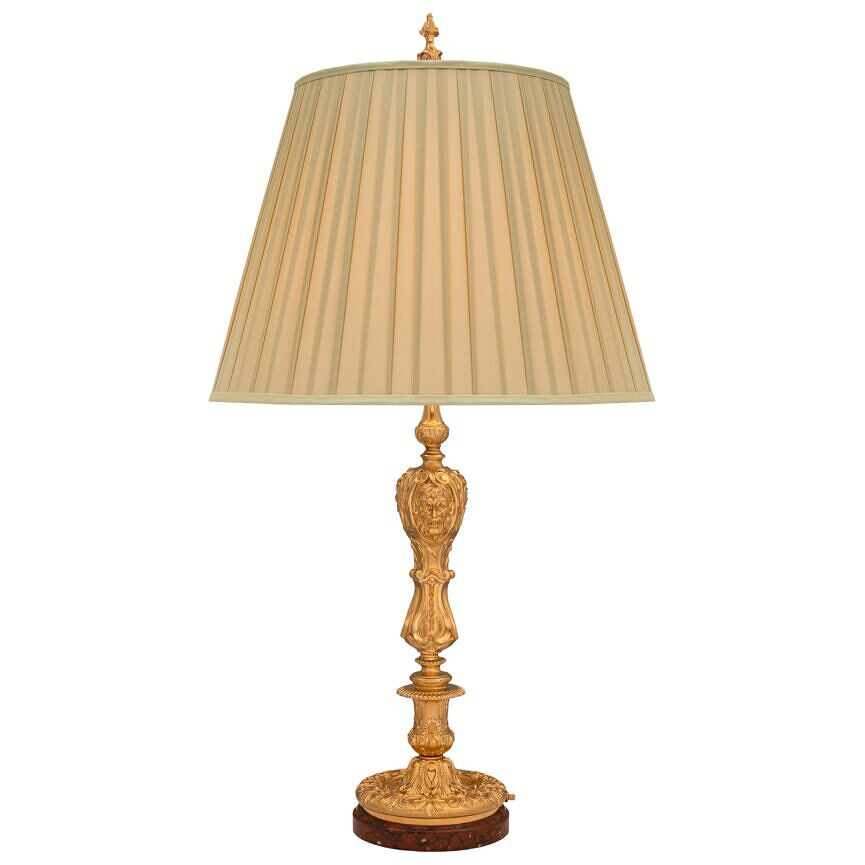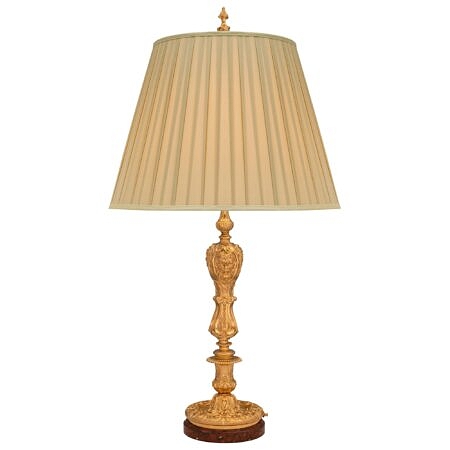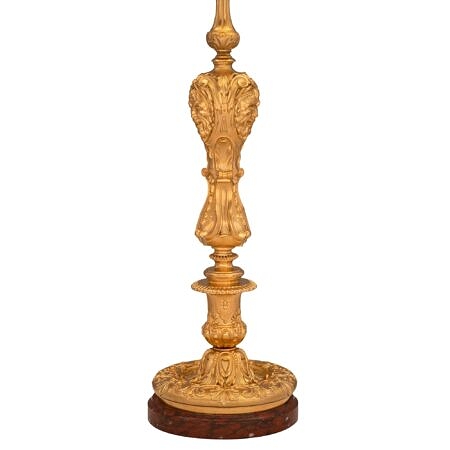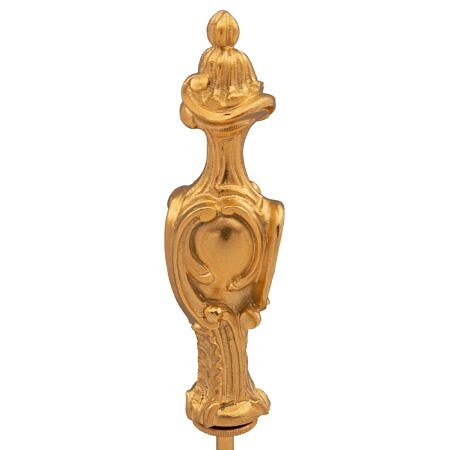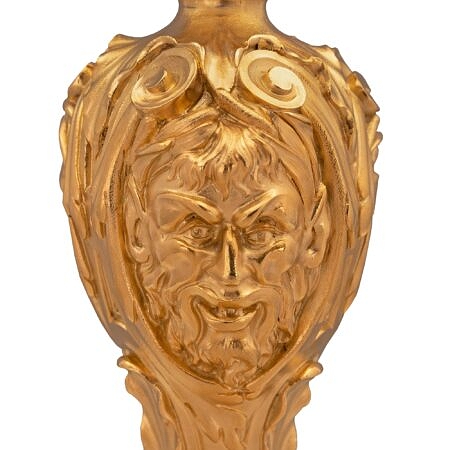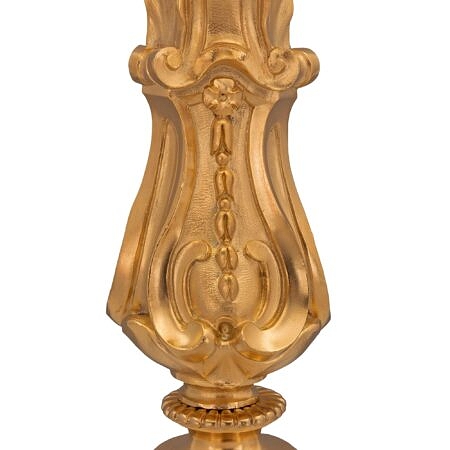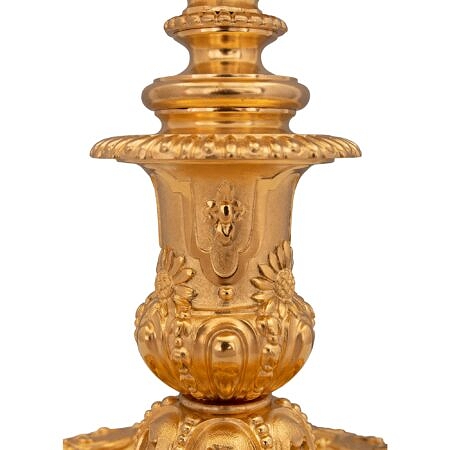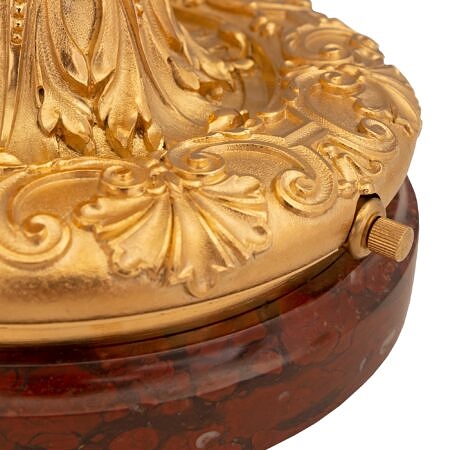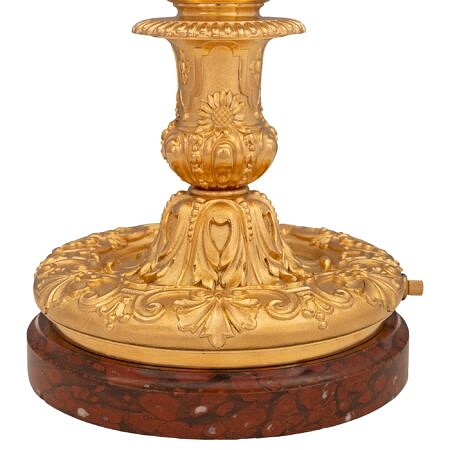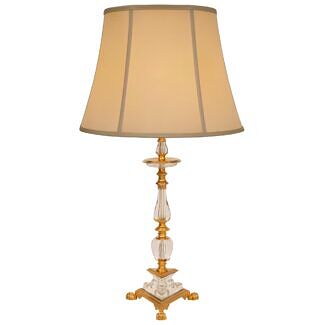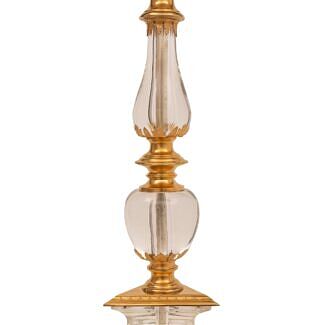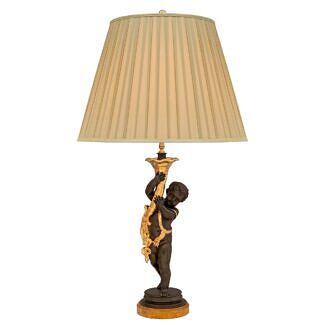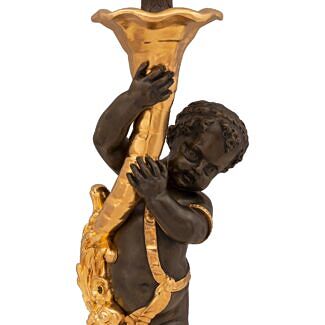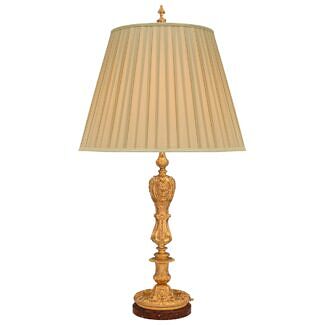A French 19th century Renaissance st. Belle Époque period ormolu and Rouge Griotte marble lamp
List: $9,800.00
A remarkable and very high quality French 19th century Renaissance st. Belle Époque period ormolu and Rouge Griotte marble lamp. The lamp is raised by its original circular Rouge Griotte marble base with a fine mottled border below the... — Read More
A remarkable and very high quality French 19th century Renaissance st. Belle Époque period ormolu and Rouge Griotte marble lamp. The lamp is raised by its original circular Rouge Griotte marble base with a fine mottled border below the beautiful socle shaped pedestal support with finely detailed scrolled foliate movements and palmettes in a rich satin and burnished finish. The central support displays an elegant reeded candle cup shape at the base with charming sunflowers while at the center is a striking scalloped foliate movement with three impressive richly chased satyr masks. — Read Less
All light fixtures have been inspected and rewired to US standards.
- Item # 12307
-
H: 40.5 in L: 8.25 in D: 22 in
H: 103 cm L: 21 cm D: 56 cm
- France
- 19th Century
- Marble/Stone, Ormolu
- Belle Époque Period Read More, Renaissance st. Read More
Related products
-
# 11934 - H: 31" L: 8" D: 18"
-
# 11950 - H: 38" L: 6" D: 22"


